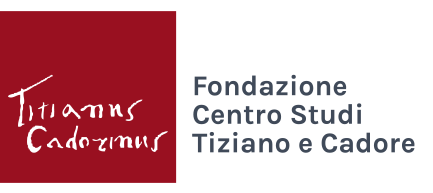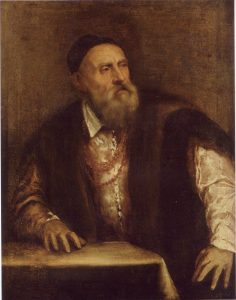Titian: Sources and Documents by Charles Hope

Self – Portrait, Tiziano Vecellio, c.1560-1562, Gemäldegalerie, Berlin
In the Ad Illisum editorial line of Paul Holberton Publishing in London, in collaboration with Burlington Magazine, is about to be published Titian: Sources and Documents. The work edited by Charles Hope is based on research conducted in the archives where documents relating to the artist and his family are kept. The publication collects the results of the research work that engaged the English scholar for fifty years.
Titian was one of the most famous, successful and long-lived of Renaissance painters and was mentioned in more than a hundred and sixty different publications in his lifetime.
Although hundreds of the documents about him and his work have been published, usually in specialised publications based on material in a single archive, there have only been two attempts to provide an overview of the entire body of documents and early published references to him, the first by Crowe and Cavalcaselle in 1877, the second by Adolfo Venturi in 1928. These publications were necessarily selective and included transcriptions of only a small part of the material which was used.
The collection, amounting to over two thousand nine hundred items, includes not only texts specifically about Titian himself, but also those concerning his siblings and children, his principal assistants and the other members of the Vecellio family already active as painters before his death, as well as inscriptions on paintings and prints.
In addition to texts dating from Titian’s lifetime, the collection includes all biographical material published before 1700 and all other texts that could realistically be thought to reflect first- or second-hand anecdotal information about him.
The particular strengths and limitations of the principal early printed sources and the circumstances in which they were produced are discussed in a substantial introduction, which also includes an overview of the main archival collections consulted in the preparation of the book. Most of these are in Italy, but others are in Spain, Austria and Germany.
New transcriptions are provided for the great majority of the documents that have previously been published, and many hitherto unknown documents have been included. Consideration is given also to documents now known only via secondary sources, and to fake documents, of which a significant number were produced in the past two centuries.
CHARLES HOPE is a former Director of the Warburg Institute. He has published extensively on fifteenth- and sixteenth-century Italian art.
For information and to order in Italy contact centrostudi@tizianovecellio.it

